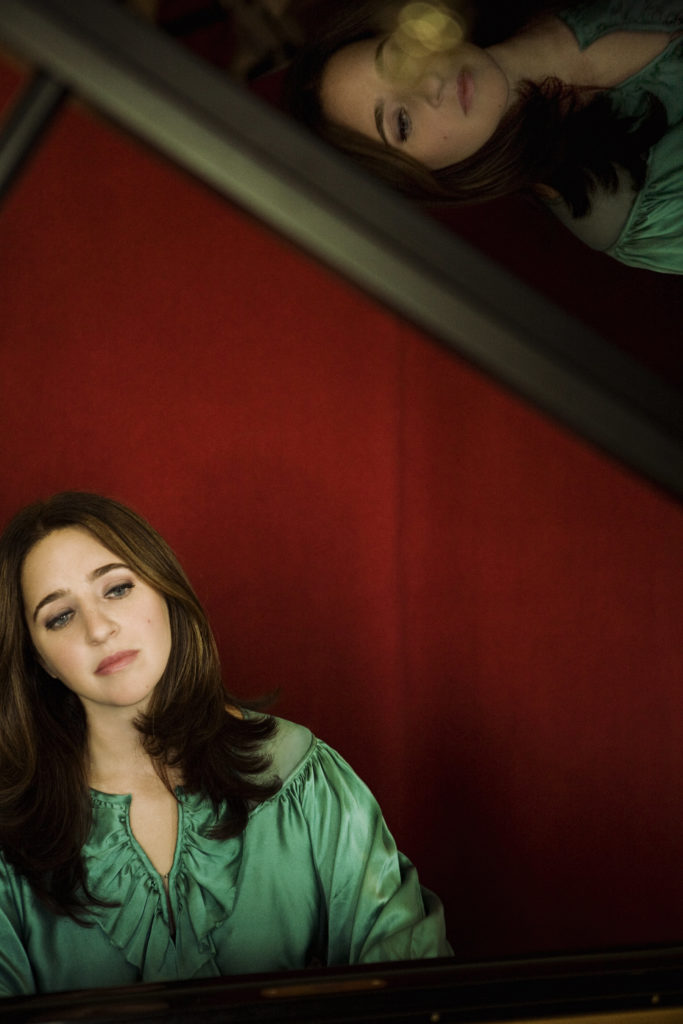A New Release from Orange Mountain Music
From the Intimacy of Quarantine, Simone Dinnerstein’s “A Character of Quiet”
The tumult of 2020 has brought trials and tribulations to all, but as people discover silver linings in enjoying more time at home or taking up a new hobby to pass the time, the fall looks to bring fruits of artists’ labors. With tours cancelled and performances postponed, musicians’ “quarantine albums” and projects have been churning out across all genres as the summer has passed, with no sign of this trend slowing. American pianist Simone Dinnerstein’s contribution “A Character of Quiet” offers an intimate home recording, pairing Philip Glass and Franz Schubert to great effect.
Being cooped up obviously affects people in different ways. While a restless energy may translate to productivity and inspirational focus for some, others may struggle with the suspension of routine and stagnant scenery at home. When preparing for this project, Dinnerstein notes her own struggles with the situation, bluntly speaking how “candidly, lockdown did not make me feel creative or productive. It made me anxious and enervated. Indeed, for two months I think I barely touched the piano….” Ultimately, producer and friend Adam Abeshouse convinced Dinnerstein to document her acclaimed interpretations of Glass & Schubert.

While engineered in Brooklyn, the recording encapsulates well the quiet of a small room. Stripping away the trappings of long reverb tails found in concert spaces and the omnipresent noise floor of creaking chairs and rustling listeners in a live recording, the isolated recording presentation is both austere and appropriate. It is a rare and wonderful opportunity to be able to hear an unadorned sonic performance—the depress of each key, the deliberate hesitations and miniscule breaks in chords that add longing to Schubert and humanize the often mechanically-performed Glass.
With the unique recording setting and circumstances, it is interesting to hear these works and reassess their impact on the listener. Of the three Glass Etudes present on the record, perhaps the opening track Etude 16 is most effectively served by the dry yet intimate space. Here the slight variations with each repetition are carefully spun, the rubato guiding the listener through harmonic shifts and liquid color undulations. The 30 seconds of true forte suitably ring out, before relaxing to a more enveloping warmth that gradually fades with utmost control back to the murky opening material. In true Glass fashion the ending lingers for an extra minute, leading the audience at home to contemplate their own quiet listening spaces.
Occasionally the moments of bombast in the other Etudes are mildly hampered by the lack of a kindly resonating hall space. Also, at climactic moments one may miss the physical presence of a full concert grand, with the tactile low end that can be felt in the bones. Yet the breathless clarity of the pristine runs in Etude 6 and the masterful pacing of the minutes-long crescendo in Etude 2, both without reverb to muddy the ears, is a worthwhile tradeoff. In all, one gains a new appreciation for the touch required at the instrument to execute these pieces.
In contrast, the Schubert Sonata in B-Flat Major D. 960, pulls the mics back a little more into the space for a more traditional stance on recording, as well as adding more of a gentle producer’s touch with a hint of extra reverb (unless Brooklyn is home to airier spaces than I realize). This contrast in recording style within a single album is a surprise at first listen but makes for an enjoyable duality to contrast the two composers. Clocking in over 40 minutes, this mammoth work, Schubert’s final sonata for piano, is well-served with a touch more added shimmering resonance anyway, and it is a light enough addition to feel organic throughout.
The opening movement is a journey unto itself, and Dimmerstein’s execution of the gradual rhythmic diminution and augmentation of the texture as the energy ebbs and flows is masterful. The chorale sections feel placid without lacking phrasing and direction, while the frenetic moments for the left hand are wonderfully driving without sounding uncontrolled. With a near 5-minute exposition, it is all too easy to give in to wandering lines, a problem only compounded by an enormous development. Dimmerstein’s approach to the pivotal d minor arrival is less explosive than Richter or Kovacevich, but maintains the character of Schubert, even in his late stages of composition; in a respectful way the interpretation is similar to Brendel.
The patient Andante second movement is given warmth in the home recording, while the third movement’s Scherzo is as exciting as always, even at a less than blazing fast tempo. Again, the closer recording setup gives cleanly executed passages a brilliance that makes for an energized listening experience. The dynamic peaks of the final Allegro movement are a fuller grandiose sound than heard anywhere else in the piece, which only better serves to make the subito shifts in character and texture that much more of a playful romp with its own ten minute run time flying by with vitality in contrast to Schubert’s failing health at the time of composition.
Simone Dimmerstein may have been reluctant to dive into a project such as this, but listeners will be enraptured by the result. Recording any of Schubert’s final sonatas is no dalliance to take on lightly and pacing out Glass’s etudes is a focused exercise no matter the situation. As Dimmerstein releases her thoughtful interpretations of these pieces into the world, the constraints of this recording project elevate the music rather than distract, providing a worthwhile listen of fresh sounds for audiences’ ears.
Please leave comments or questions below!



